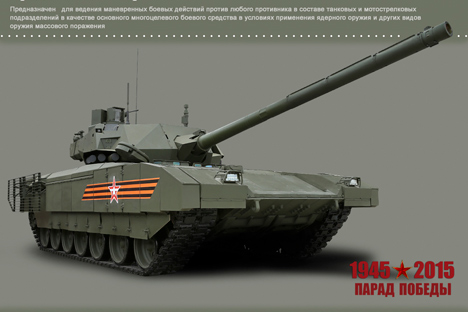So what has happened to Russia’s new Armata armored platform?
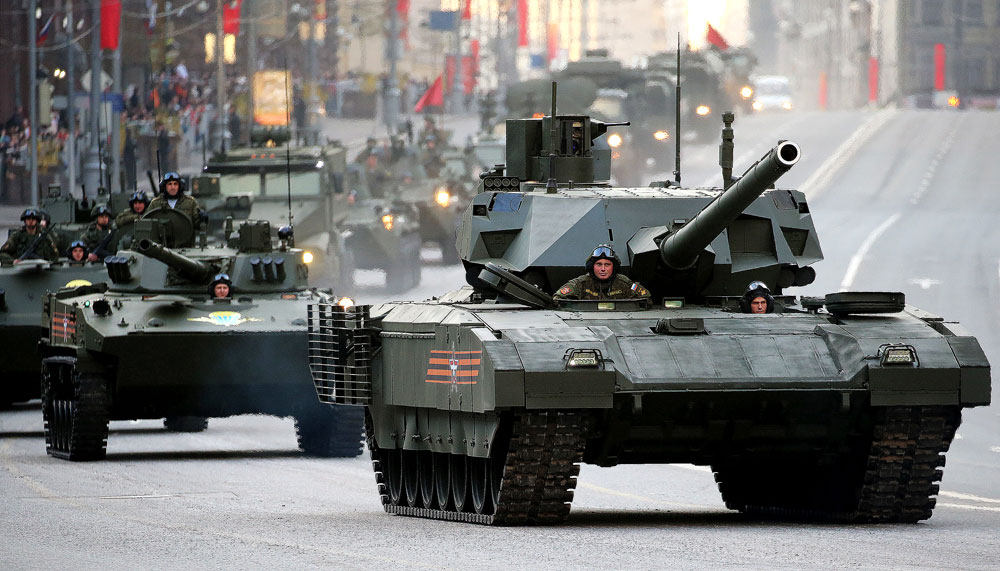
Armata battle tanks move along Tverskaya Street ahead of a Victory Day Parade rehearsal in Moscow's Red Square.
Sergei Fadeichev / TASSOn May 9, 2015, at a parade marking the 70th anniversary of victory over Nazi Germany in 1945, the Russian military revealed for the first time to the public its newest tank, the Armata, and two armored platforms – the Kurganets and Boomerang, triggering unprecedented global media interest.
A year later, however, the much-vaunted new hardware has vanished from view, yet according to a statement made by former Chief of the Land Forces of the Russian Federation Alexander Postnikov, bulk purchases of these new tanks and armored personnel carriers should have started in the year 2016. So what exactly is going on with the new technology and when can it be expected to go into service?
Armata Universal Combat Platform
Very few countries produce armored vehicles, and these rarely present innovations in the sector. In Russia, such a large-scale upgrade of the national armored fleet was a consequence of a change in the ideology of military construction and the beginning of the transition from a mass-mobilization type army to a more compact and efficient armed forces.
The Armata is a platform on which a wide range of heavy military vehicles will be created, able to operate in difficult counter-fire conditions – the T-14 Armata main battle tank, the T-15 armored personnel carrier, the Koalitsiya-SV self-propelled artillery platform, and the T-16 armored recovery vehicle (ARV).
However, less than a year since the May 2015 victory parade, it has become clear that massive implementation of this technology cannot be expected in the near future.
Until 2020, only individual units will be equipped with the T-14 Armata. For now, a pilot test-batch of 20 tanks is being produced. Their trial operation by the troops should identify shortcomings, which subsequently can be eliminated before bulk purchases take place.
The delivery of T-15 armored personnel carriers and Koalitsiya-SV self-propelled artillery platforms will probably start either simultaneously, or somewhat later after the T-14 tanks.
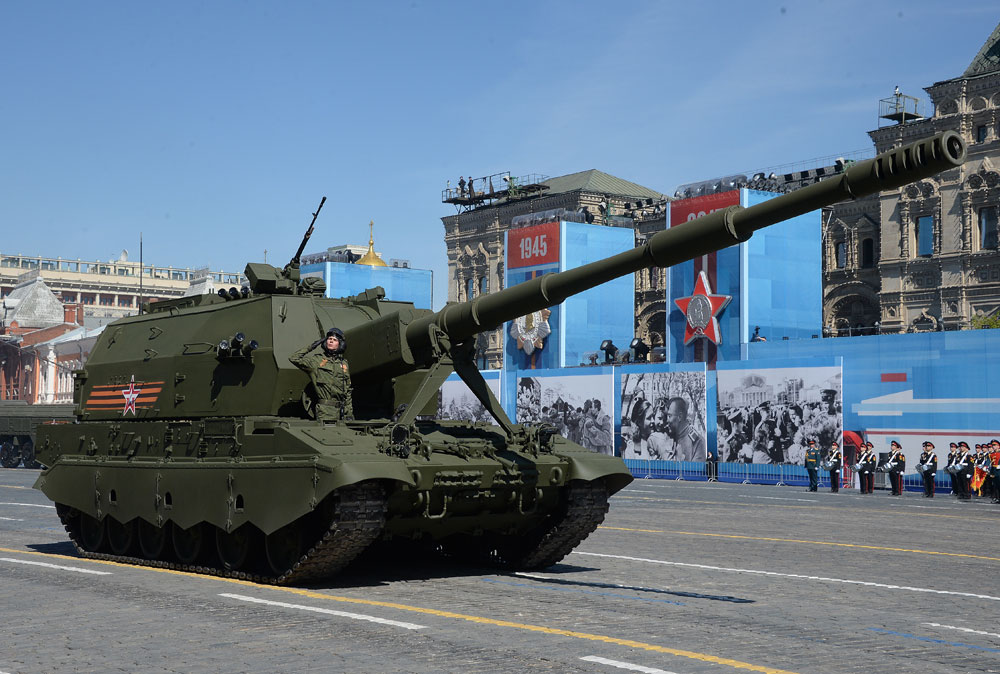 A Coalition-SV class self-propelled howitzer at the final rehearsal of the military parade. Source: Ilia Pitalev / RIA Novosti
A Coalition-SV class self-propelled howitzer at the final rehearsal of the military parade. Source: Ilia Pitalev / RIA Novosti
In the meanwhile, Russian industry is developing components for the production of the Armata, with mass production of ceramic armor, communication engines and electronic systems for the heavy platform commencing in 2015.
At the same time, the manufacturers are working on the possibilities of producing vehicles based on the Armata platform for export. This would reduce the cost per unit for the Russian armed forces.
The Kurganets-25medium combat platform
The Kurganets-25 is the middle brother of the new armored vehicles trio, which is nonetheless almost 10 tons heavier than the most modern armored vehicle currently in service with the Russian Army – the BMP-3. Moreover, unlike the T-15, the Kurganets can swim.
Future crews of this fighting machine can count on the powerful weapons and advanced active and passive defense systems. This machine should protect the lives of the crew and assault troops significantly better than the BMP, which has been labeled by the military as the “fraternal infantry grave” (from the first letters of the Russian abbreviation BMP – bratskaya mogila pekhoty).
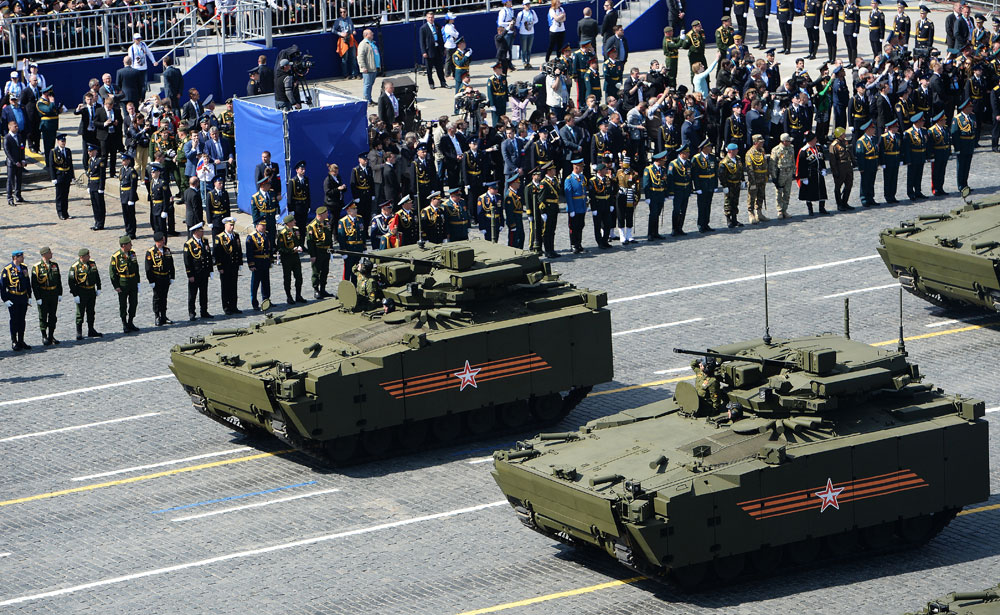 Kurganets-25 infantry fighting vehicles with medium-category caterpillar chassis at the military parade. Source: Alexander Vilf / RIA Novosti
Kurganets-25 infantry fighting vehicles with medium-category caterpillar chassis at the military parade. Source: Alexander Vilf / RIA Novosti
It is possible to install various weapons modules on the base of this new platform – and thus creating infantry combat vehicles (cannon armaments) and APCs (machine-gun armaments).
The testing of these machines should be completed by 2016, and mass production is planned to begin in 2017-2018.
In the fall of 2015, Albert Bakov – the first vice-president of Traktornyye Zavody Concern, which is manufacturing the Kurganets platform – said that the completion of research and development (R&D) schedules on the Kurganets-25 middle combat platform had been shifted by one year, and now state testing will begin only in 2017.
The Boomerang medium combat platform
The Boomerang will eventually take the place of BTR-80 and BTR-82 family of wheeled armored personnel carriers as well as older models in the Russian army. Unlike the old versions, this new fighting machine is able to withstand fire from high-caliber machine guns and even grenades, can also swim, and at the same time carry various weapons modules. The Boomerang is to be used as a base for infantry combat vehicles as well as wheeled APCs.
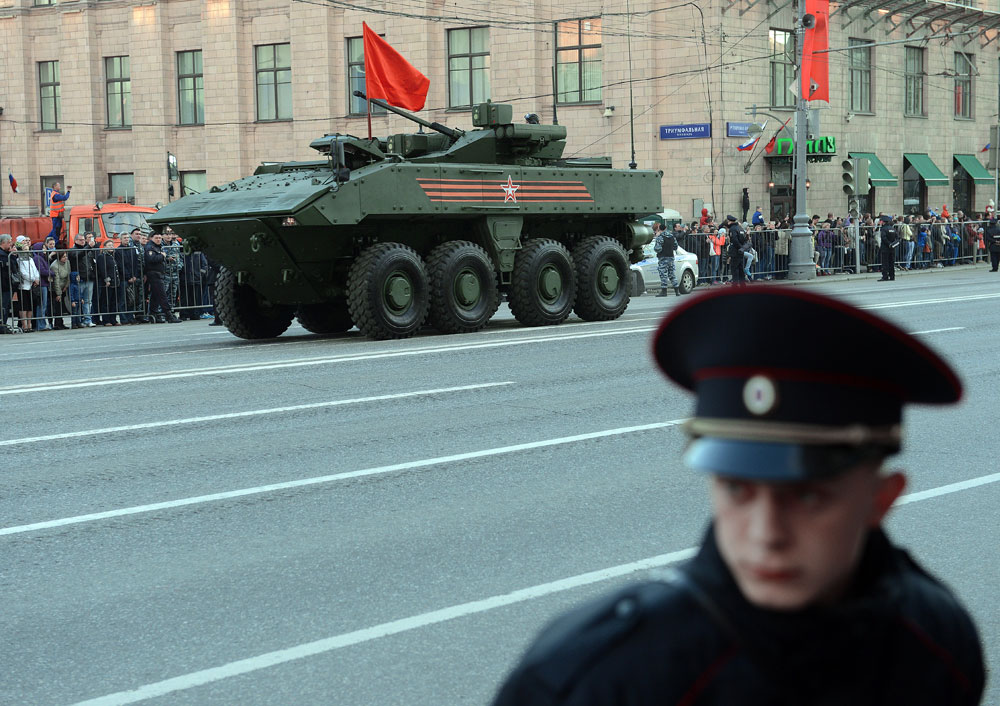 A Boomerang medium-weight wheeled armored personnel carrier during a rehearsal of the military parade. Source: Grigoriy Sisoev / RIA Novosti
A Boomerang medium-weight wheeled armored personnel carrier during a rehearsal of the military parade. Source: Grigoriy Sisoev / RIA Novosti
At the beginning of 2016, Alexander Krasovitsky, general director of the Military-Industrial Company (Voyenno-Promyshlennaya Kompaniya), which developed the new APCs, announced the start of testing of the Boomerang. Mass production of the Boomerang vehicles is scheduled to begin in 2017, and large-scale deliveries to the armed forces – in 2019.
Krasovitsky said that, as is the case with the Armata and the Kurganets, the manufacturing enterprises are actively looking for foreign buyers and partners for the refinement of their products. He noted that his company is ready to supply the Boomerang for export as soon as it receives permission from the government.
Read more: Russia ranked world’s 2nd military power after U.S.>>>
All rights reserved by Rossiyskaya Gazeta.
Subscribe
to our newsletter!
Get the week's best stories straight to your inbox
